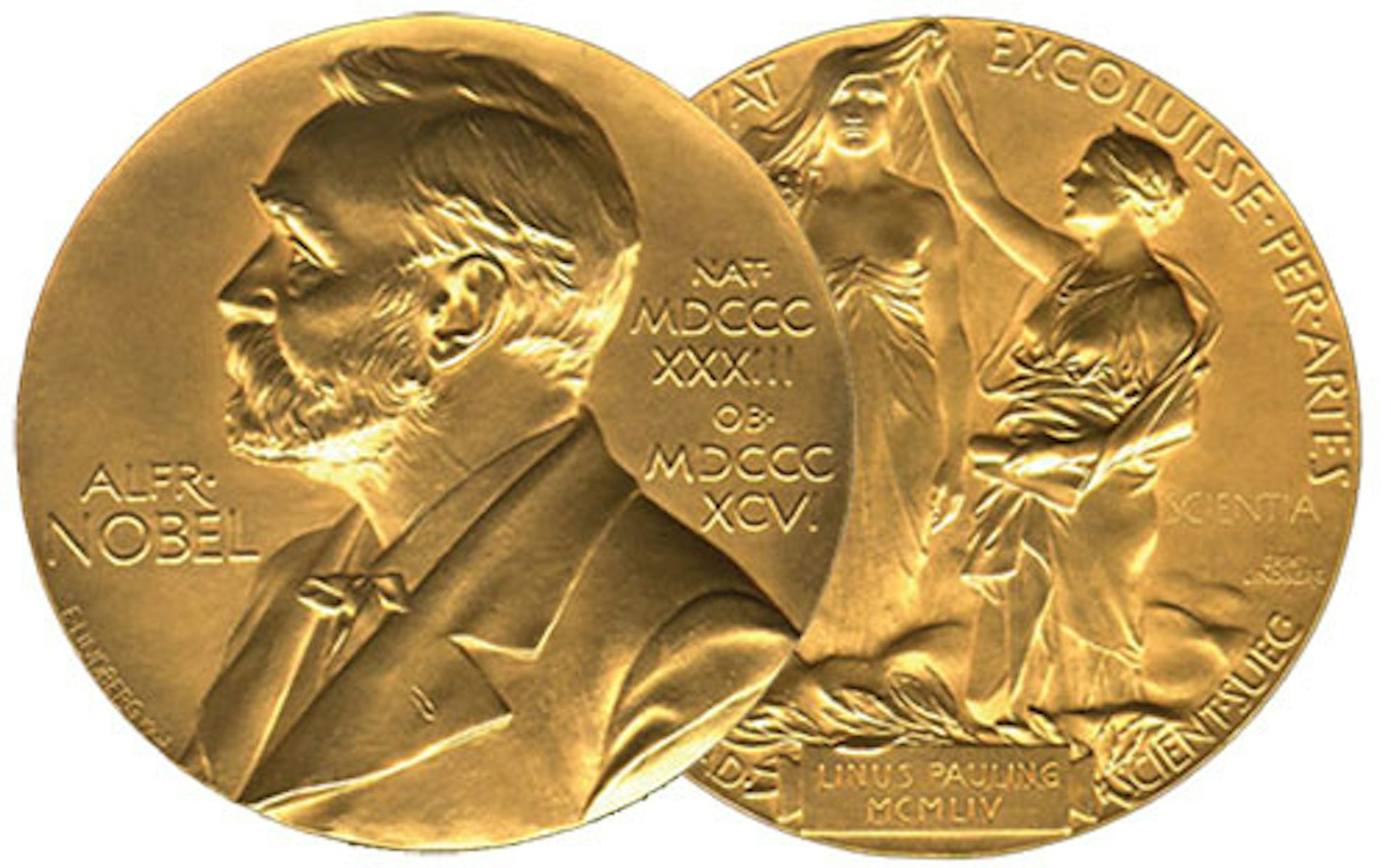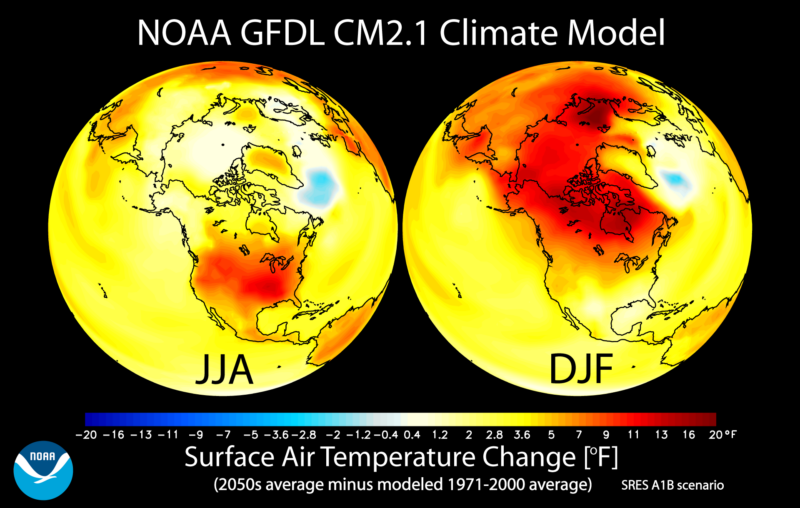Complex behavior is all around us. Think of something like the economy. It has many components, each with its own set of rules and all of them interacting in complicated ways. Trying to follow what's going on from the ground up is nearly impossible. Yet some reasonably consistent behaviors emerge from that complexity, allowing us to understand some general rules for it.
This mix of complexity and emergent behavior shows up in many other systems involving aggregate human behavior, as well as in areas of physics, chemistry, and biology. This year's Nobel in Physics is split evenly between two aspects of studying these systems. Half of the award goes to Giorgio Parisi, who helped find methods for understanding complex systems that can be applied more generally. And the other half is split between two climate modelers, Syukuro Manabe and Klaus Hasselmann, who helped developed systems that we now use to understand how the climate's behavior emerges from the complicated interaction of its components and influences—including the growing influence of greenhouse gases.
Complex systems and emergent behavior
Giorgio Parisi's work has its roots in the earliest days of statistical mechanics, most notably the work of James Clerk Maxwell (of Maxwell's Demon fame) and Ludwig Boltzmann, who famously applied a statistical approach to the second law of thermodynamics (entropy). Finally, physicists had a mathematical tool capable of describing how properties on the macroscale—such as the temperature and pressure of a gas—emerge from the random, disordered movements of particles on the microscale. Parisi's work uncovered the hidden rules that govern these kinds of complex disordered systems and their emergent properties.
What does it mean for a property to be emergent? Think of a lump of gold. It has properties like hardness or color, but these properties are not found in the individual atoms that make up the lump. Rather, they emerge from the collective interactions among the gold's component atoms.
That's a fairly simple, straightforward example. It's often more difficult to predict the behavior of a highly complex system like the weather or of a granular material like sand or gravel. That's thanks to the sheer number of individual components, the randomness of their interactions, and the many variables that can impact those interactions.
For instance, sand can behave like both a liquid and a solid. Dry sand pours like a fluid easily out of a bucket, but if you place a rock on top of the same sand, the collective grains are solid enough to support it—even though, technically, the rock is denser than the sand.
The usual tidy equations that govern the phase transition from a liquid to a solid simply don't apply. The grains seem to act like individual particles when flowing out of the bucket but can quickly band together when solidarity is needed. The large number of individual grains makes it difficult to predict how the system will behave from one moment to the next—like determining when an avalanche is likely to occur. Each grain interacts with several immediate neighboring grains simultaneously, and the neighboring grains' behavior is constantly shifting from one moment to the next.
A different spin
Parisi's Nobel-worthy insights came from his work with spin glasses, a metal alloy in which iron atoms mix randomly within a grid of copper atoms. The spins of the atoms in a regular magnet all point in the same direction. That's not the case in a spin glass, in which each iron atom is influenced by the other iron atoms in its vicinity. So you get an atomic-scale tug of war: Some nearby spin pairs naturally want to point in the same direction, but others want to point in the opposite direction. They are caught in a "frustrated" state.
Parisi himself drew an analogy to the characters in a Shakespearean play, where one character wishes to have peace with two others, but those two others are sworn enemies. Similarly, in a spin glass, if two spins want to point in opposite directions, a third spin cannot point in both directions at the same time. Somehow, the spin glass finds an optimal orientation that constitutes a compromise between the two opposing spins.
In the 1970s, physicists attempted to describe these frustrated complex systems by trying to process many copies of the system (replicas) simultaneously. It was a clever mathematical trick but did not produce the desired results. Parisi found the hidden disordered structure lurking underneath, cracking the case. Parisi showed that even if you contemplated many exact replicas of the system, each replica might end up in a different state because there are so many possible states and it’s hard to transition between them. The analysis, therefore, replicates symmetry breaking, a common feature of many physical systems.
His breakthrough, then, is applicable to far more than spin glasses. In the decades since, scientists have used his insights to describe complex disordered systems in a wide range of fields: mathematics, biology, neuroscience, laser science, materials science, and machine learning, to name a few. All of these systems seem very different on the surface, but they share a common underlying mathematical framework.
For instance, biological swarms (like midges) and flocking behavior among starlings and jackdaws are both examples of emergent collective behavior; the patterns that form arise from underlying rules of interaction, which can change in response to different environmental cues. Parisi's work has been influential in addressing the Traveling Salesman conundrum (a classic optimization problem) and to the study of neural networks. It may also prove relevant to the study of social networks, such as how political polarization, or social perception bias, can be treated as emergent properties arising from the complex interactions of millions of people.
The emergence of climate models
Through this year's award, the Nobel Committee is arguing that Parisi's breakthrough has parallels to how the incredibly complex behaviors that produce the climate can still be understood by tracking the underlying physics. In other words, if you model things like the mixing of gases and their interactions with radiation, clear behaviors can emerge from these processes, even if there are a lot of variations layered on top of that behavior. This is exactly what we've ended up doing with climate models.
The award for climate modeling recognizes two very distinct aspects of its development. While climate models have only come to the public's attention over the last few decades, attempts to model how the atmosphere's composition influences its temperature date all the way back to Svante Arrhenius' work in 1896. Early work, however, treated the system as static and made no distinction between the land and ocean surfaces beneath the atmosphere. While these efforts grew more sophisticated over the decades, they mostly involved incorporating some of the Earth's complexities while finding the point at which incoming and outgoing energy balanced.
The work of Syukuro Manabe, honored today, was critical in starting the transition to the modern modeling approach. Manabe started working at Princeton's Geophysical Fluid Dynamics Laboratory in 1959; by a decade later, he had developed a computer model that simulated a one-dimensional column of the atmosphere. This allowed the model to include more realistic conditions, like uneven distribution of gases at different levels of the atmosphere and the redistribution of heat via convection.
By 1975, he and his colleagues had managed an astonishing feat: creating a fully global model that tracked heat, radiation, and the movement of atmospheric gases, all in a computer with a half-megabyte of RAM. Amazingly, this study produced a climate sensitivity to greenhouse gases that is within the range of uncertainties produced by today's models.
Klaus Hasselmann is being recognized for making key contributions to figuring out how to compare the output of climate models to real-world data, allowing us to identify the fingerprints of rising greenhouse warming. Hasselmann got into this area by focusing on the natural variability of the climate system. Figuring out the limits of these natural variations leads directly to the ability to identify when the system has exceeded those limits and therefore must be experiencing some additional influences.
Over the period between 1979 and 1997, Hasselmann was one of the authors on three papers that were critical to setting up a framework for the comparison of models with real-world data. These included influential ideas on how best to identify the signals of greenhouse warming, recognizing that sometimes it's better to measure parts of the climate where the noise of natural variability is low instead of where the greenhouse warming signal is strongest. Other scientists have called his work "the first serious effort to provide a sound statistical framework for identifying a human-caused warming signal.
There's always some uneasiness among research communities about the specific individuals who win the Nobel, and that's likely to be exacerbated here. Climate modeling is a multi-disciplinary activity pursued by many large teams around the globe and is one that largely builds incrementally on the work of earlier modelers, so picking out a limited number of people to honor was always going to be problematic. While the Nobel Committee made a reasonable attempt to honor milestones during the evolution of climate models into the systems we use today, it's not surprising that some climate scientists are expressing a bit of uneasiness about the award.



3175x175(CURRENT).thumb.jpg.b05acc060982b36f5891ba728e6d953c.jpg)


Recommended Comments
There are no comments to display.
Join the conversation
You can post now and register later. If you have an account, sign in now to post with your account.
Note: Your post will require moderator approval before it will be visible.